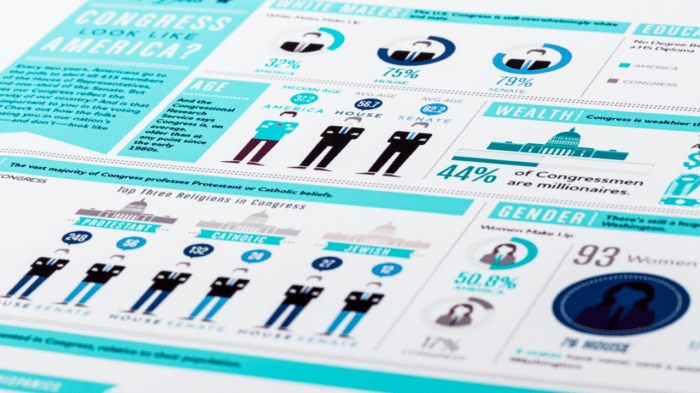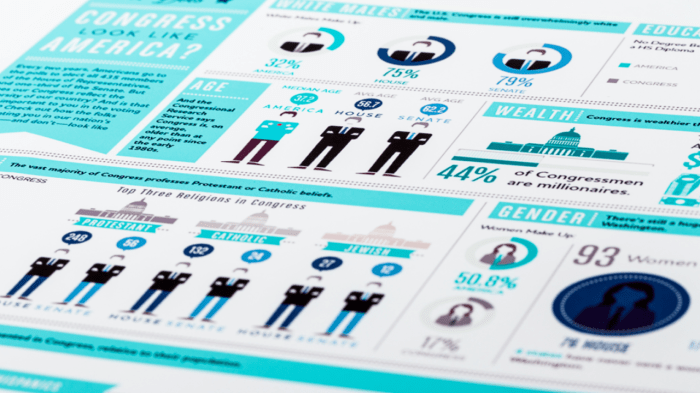How to improve brand perception sets the stage for this insightful exploration, delving into the crucial strategies for shaping a positive brand image. Understanding your audience’s current perception is paramount, and this involves analyzing various data sources, from social media chatter to customer feedback. We’ll explore the vital steps to transforming negative perceptions into positive ones, focusing on practical strategies and actionable steps.
This guide will equip you with the knowledge and tools needed to assess your brand’s current standing, identify areas for improvement, and craft a robust strategy for positive change. From understanding your target audience to crafting a compelling brand message, we’ll cover it all, ensuring you’re well-prepared to navigate the complex landscape of brand perception management.
Understanding Current Brand Perception
A crucial step in improving brand perception is a deep dive into the current landscape. Understanding how your brand is perceived by various target audiences is vital for crafting effective strategies. This involves a thorough assessment of existing sentiment, opinions, and overall brand image. By understanding the strengths and weaknesses of your current perception, you can create a roadmap for improvement.
Assessing Brand Perception Across Target Audiences
Different target audiences will perceive your brand differently based on their unique needs, expectations, and experiences. To accurately gauge current perception, you must segment your audience into distinct groups. Consider demographics, psychographics, and behavioral factors when creating these segments. For example, a tech company might segment its audience into early adopters, mainstream users, and budget-conscious consumers. Each segment will likely hold different opinions and perspectives regarding the brand.
Gathering Data on Customer Sentiment and Opinions
A variety of methods can be employed to gather data on existing customer sentiment. These include surveys, social media monitoring, customer reviews, and focus groups. Surveys can directly solicit opinions and quantify attitudes. Social listening tools can identify trends and public conversations about your brand. Review sites offer invaluable insights into customer experiences.
Focus groups provide deeper qualitative data, allowing for a more nuanced understanding of customer perceptions.
Analyzing Data Sources to Understand Perceptions
Analyzing the collected data requires a structured approach. Qualitative data, such as comments from social media or focus groups, can be analyzed using thematic analysis to identify recurring themes and sentiments. Quantitative data, like survey results, can be statistically analyzed to uncover trends and patterns. For example, sentiment analysis tools can automatically determine the positive, negative, or neutral tone of customer reviews.
This analysis should be meticulously documented, detailing the methods and results.
Boosting brand perception is all about showcasing your company’s personality and values authentically. A key component to this is understanding how to drive organic traffic through social posts. By creating engaging content that resonates with your target audience, you’ll not only increase your visibility but also foster a positive brand image. Leveraging strategies like optimizing for social posts organic traffic and understanding audience interaction will help solidify a strong brand reputation.
This, in turn, will lead to a more favorable brand perception in the long run.
Effective Tools and Techniques for Measuring Brand Perception
Various tools and techniques can be leveraged to measure brand perception effectively. Social listening platforms, such as Brandwatch or SproutSocial, provide comprehensive data on online conversations. Review aggregation platforms like Yelp or Trustpilot offer valuable insights into customer experiences. Customer relationship management (CRM) systems can track customer interactions and feedback. By combining insights from multiple sources, a more holistic understanding of brand perception can be achieved.
Organizing Results into a Comprehensive Report
A well-structured report is essential for presenting the findings and facilitating strategic decision-making. The report should clearly Artikel the methodology used to collect and analyze the data. It should also present a summary of the findings, highlighting both the strengths and weaknesses of the current brand image. Use charts and graphs to visually represent key data points, enhancing comprehension and clarity.
For instance, a pie chart illustrating the percentage of positive, negative, and neutral sentiments toward the brand can quickly convey the overall perception. The report should conclude with actionable recommendations for improving brand perception based on the identified strengths and weaknesses. This report will be the foundation for future strategies.
Identifying Areas for Improvement
Improving brand perception requires a deep dive into the current landscape. Understanding how consumers perceive your brand, compared to competitors, is crucial for identifying areas ripe for enhancement. This analysis allows for strategic adjustments to resonate with the target audience and future-proof the brand.Analyzing the current perception of your brand, alongside competitor benchmarks, offers valuable insights into potential areas needing attention.
This process involves a comprehensive evaluation of strengths, weaknesses, opportunities, and threats (SWOT) in the market. Identifying areas for improvement involves a proactive approach to anticipating market trends and shifts in consumer preferences.
Key Areas for Brand Perception Improvement
Understanding where your brand falls short compared to competitors is vital for effective improvement. Identifying these areas involves a careful comparison of brand attributes, values, and messaging. This comparative analysis helps to pinpoint strengths and weaknesses in your brand’s current image.
- Brand Identity Consistency: Inconsistencies in brand messaging across various platforms, such as website, social media, and marketing materials, can confuse consumers and dilute brand perception. This inconsistency may lead to a fragmented view of the brand, impacting customer trust. Examples include mismatched brand colors, differing voice tones, or a lack of cohesion in visual identity elements.
- Customer Experience Gaps: Evaluating customer interactions across all touchpoints is essential. Inconsistencies in customer service, product quality, or website usability can create negative experiences. This could result in lower customer satisfaction scores and a poor brand image. For instance, slow response times to customer inquiries or a confusing website navigation negatively impact brand perception.
- Competitor Analysis: A thorough analysis of competitor strategies and their perceived strengths is necessary. Understanding how your competitors are positioned in the market and the aspects of their brands that resonate with consumers is crucial. This includes analyzing their pricing strategies, marketing campaigns, and overall brand messaging to find gaps and opportunities for differentiation.
- Market Trend Analysis: Staying abreast of evolving market trends and consumer preferences is vital for anticipating future needs and addressing potential issues. Trends such as sustainability, ethical sourcing, and personalized experiences are influencing consumer choices. Failure to adapt to these changes can lead to a loss of market share.
Prioritizing Improvement Areas
Prioritization is crucial to focus resources effectively. Areas requiring immediate attention should align with the greatest potential impact and align with the brand’s overall objectives. A structured approach is essential for creating a prioritized list, ensuring that resources are allocated strategically.
- Impact Assessment: Evaluate the potential impact of each identified area for improvement on brand perception. Consider the magnitude of the problem and the potential for positive change. For example, addressing a significant customer service issue will likely have a more immediate and noticeable impact than a minor inconsistency in brand messaging.
- Resource Allocation: Assess the resources required for addressing each area. This includes financial resources, human resources, and time commitments. This ensures a realistic approach to implementing the chosen improvements.
- Timeline Considerations: Determine a reasonable timeline for addressing each area. This helps in setting achievable goals and managing expectations.
- Alignment with Brand Values: Ensure that the chosen areas for improvement align with the core values and mission of the brand. This creates a unified and authentic brand image.
Aligning Brand Values and Messaging
Aligning brand values with identified areas for improvement is essential. This ensures consistency and authenticity in brand communication. Consumers are increasingly drawn to brands that reflect their values. The messaging must effectively communicate the improvements made.
- Value Integration: Ensure that the brand’s values are reflected in the improvements being made. If sustainability is a core value, improvements should incorporate sustainable practices. This demonstrates authenticity and strengthens consumer trust.
- Messaging Alignment: Communicate the improvements effectively through messaging that resonates with the target audience. Showcase the changes implemented to demonstrate value proposition and enhance brand perception.
Crafting a Strategy for Positive Change

Improving brand perception is not a one-size-fits-all endeavor. It requires a meticulously crafted strategy that addresses specific pain points and leverages opportunities for growth. This involves more than just superficial changes; it necessitates a deep understanding of your target audience and a commitment to consistent action. A well-defined strategy is crucial for navigating the complexities of the modern marketplace and achieving lasting positive change.A successful strategy for positive brand perception change must be built on a solid foundation of understanding and proactive action.
It’s not enough to simply identify areas needing improvement; you need a plan to effectively communicate these improvements to your audience and manage potential setbacks. This requires a multifaceted approach encompassing communication, online presence, reputation management, and influencer relations.
Communication Strategy for Brand Improvement
A well-defined communication strategy is essential for effectively conveying the desired brand image. It involves crafting consistent messages that resonate with your target audience and reinforce the brand’s values. This includes defining clear brand guidelines, ensuring consistent messaging across all platforms, and establishing a brand voice that reflects your company’s personality. This strategy should also include a plan for monitoring and adjusting messaging based on feedback and market trends.
Importance of Consistent Brand Messaging and Visual Identity
Maintaining consistency in brand messaging and visual identity across all platforms is critical for building brand recognition and trust. A consistent brand experience fosters a sense of familiarity and reliability with customers. Visual elements, like logos, color palettes, and typography, should be applied consistently across your website, social media profiles, marketing materials, and all other touchpoints. This ensures that customers recognize your brand wherever they encounter it, reinforcing brand recognition and creating a unified brand identity.
Building a Strong Online Presence and Engaging with Target Audiences
A robust online presence is paramount in today’s digital landscape. It’s not enough to simply have a website; you need to actively engage with your target audience on social media platforms. Understanding the nuances of each platform and tailoring your content to resonate with the specific audience on each platform is key. Consistent posting, interactive content, and responding to comments and messages demonstrate engagement and build trust.
Managing Brand Reputation in the Face of Negative Feedback or Crises
Negative feedback and crises are inevitable. How you respond to these situations significantly impacts your brand perception. Proactive reputation management involves monitoring online conversations, addressing negative feedback promptly and professionally, and establishing clear communication channels for handling complaints and concerns. A well-defined crisis communication plan is crucial for minimizing damage and regaining trust.
“Transparency and honesty are essential during a crisis.”
Building Strong Relationships with Influencers and Thought Leaders
Collaborating with influencers and thought leaders can significantly enhance your brand’s reach and credibility. Strategic partnerships with relevant influencers can expose your brand to a wider audience, amplify your message, and build trust with potential customers. Identifying influencers whose values align with your brand and building genuine relationships based on mutual respect and shared interests are key. Building a strong network of influencers and thought leaders is vital to achieving effective brand awareness and building a strong, positive brand image.
Implementing and Monitoring the Strategy
Putting your brand improvement plan into action requires a well-defined implementation strategy. This phase isn’t just about execution; it’s about meticulously tracking progress, adapting to changing market dynamics, and ensuring your efforts yield the desired results. A robust monitoring system is crucial for measuring success and making necessary adjustments along the way.
Detailed Implementation Steps
Implementing your brand improvement strategy requires a phased approach. First, clearly define roles and responsibilities within your organization. Assign specific tasks to individuals or teams, ensuring accountability and a smooth workflow. Next, establish clear timelines for each task, creating a roadmap for progress. Regular communication and progress reports are vital to keep everyone informed and aligned.
Finally, allocate necessary resources—financial, human, and technological—to support the execution of the plan. This proactive approach ensures efficiency and effectiveness throughout the process.
Measurable KPIs for Tracking Progress
Key Performance Indicators (KPIs) are essential metrics for evaluating the success of your brand improvement efforts. They provide quantifiable data to track progress and identify areas needing attention. Some key KPIs include website traffic, social media engagement (likes, shares, comments), customer feedback scores (e.g., Net Promoter Score, customer satisfaction scores), brand mentions in online conversations, and sales figures.
These metrics provide a holistic view of how your brand is performing in the market.
Monitoring Brand Perception Changes
Monitoring brand perception requires continuous observation of public sentiment. Tools like social listening platforms, brand monitoring software, and online surveys can provide real-time data on how consumers perceive your brand. Analyze social media conversations, news articles, and customer reviews to gauge public opinion. Track changes in brand sentiment over time, identifying trends and patterns. This proactive monitoring allows you to react to emerging issues and maintain a positive brand image.
Collecting and Evaluating Feedback
Collecting feedback is critical for understanding customer perspectives and evaluating the effectiveness of your strategies. Implement various feedback mechanisms such as surveys, online forums, focus groups, and customer service interactions. Regularly analyze collected data, identifying recurring themes and areas of concern. Use this feedback to refine your strategies and demonstrate a commitment to customer satisfaction. The insights gathered help you adapt your strategies and improve brand perception in the long run.
Boosting brand perception often hinges on connecting with your audience. A great way to achieve this is by optimizing your Facebook ad campaigns to drive traffic and ultimately, sales. Check out this guide on optimize facebook ads drive traffic sales for actionable strategies. By focusing on targeted ads and compelling visuals, you can significantly enhance brand recognition and build trust with potential customers, ultimately leading to improved perception.
The Role of Customer Service in Maintaining Brand Perception
Exceptional customer service is paramount in maintaining and enhancing brand perception. Customers’ interactions with your brand’s support channels directly impact their overall experience. Ensure your customer service representatives are well-trained, empathetic, and equipped to resolve issues effectively. Prompt responses, personalized interactions, and a commitment to problem-solving create a positive brand experience. By fostering strong relationships with customers through exceptional customer service, you reinforce positive brand perception and loyalty.
Examples of Successful Brand Perception Improvement: How To Improve Brand Perception
Improving brand perception isn’t a one-size-fits-all endeavor. It requires a deep understanding of the current state, careful identification of areas needing attention, and a well-defined strategy for positive change. Success stories offer valuable insights into what works and what doesn’t. Learning from the experiences of others can significantly accelerate the journey towards a more favorable brand image.Successful brand perception improvement campaigns demonstrate that a holistic approach, addressing internal and external factors, is crucial.
These campaigns are not simply about marketing tactics; they’re about genuine transformation and alignment with evolving consumer values and expectations. The following examples highlight diverse strategies and their respective outcomes.
Boosting brand perception isn’t just about pretty logos; it’s about providing a seamless user experience. A key part of that is crafting a compelling long-form landing page. Think about how a well-structured landing page, like the one described in the structure longform landing page guide, can showcase your brand’s expertise and values. Ultimately, a strong, informative landing page builds trust and improves your brand’s overall image.
Case Studies of Brand Perception Improvement
A review of successful brand perception improvement campaigns reveals common threads and distinct approaches. Understanding the context of each case study and the specific strategies employed offers valuable lessons for future endeavors.
| Brand | Problem | Strategy | Results |
|---|---|---|---|
| Dove | Negative perception of unrealistic beauty standards and a lack of diversity in their marketing campaigns. | Dove shifted its focus towards a more realistic and diverse portrayal of beauty. Their “Real Beauty” campaign featured women of different ages, ethnicities, and body types. The campaign also highlighted self-acceptance and body positivity. This involved internal cultural changes, supporting a more inclusive brand culture. | Increased brand affinity and positive media coverage. The campaign became a powerful social movement, driving significant positive change in the beauty industry. Dove’s sales figures increased and customer loyalty improved dramatically. |
| Netflix | Initially perceived as a niche streaming service with a limited content library. | Netflix invested heavily in original content production, creating high-quality shows and movies that resonated with diverse audiences. This was coupled with a proactive approach to content marketing and promotion, effectively targeting various demographics. | Became a global leader in the streaming industry. Strong brand recognition and a loyal subscriber base. The quality of original content played a significant role in transforming the brand’s image. |
| Tesla | Early concerns about the quality of vehicles and customer service. | Tesla focused on delivering high-quality vehicles, resolving customer complaints effectively, and building a strong brand community through social media engagement and interactive events. They also emphasized the sustainability aspect of their vehicles, which resonated with environmentally conscious consumers. | Established a strong brand identity as an innovator in the automotive industry. Attracted a loyal customer base through the combination of superior technology, consistent performance, and strong customer service. Tesla’s strong brand reputation led to increased sales and market valuation. |
Key Lessons Learned
The success of these campaigns underscores the importance of authenticity and consistency. A genuine commitment to change, visible in both internal processes and external communication, is paramount. Furthermore, identifying and addressing the core issues behind negative perceptions is essential for achieving lasting improvement.
Addressing Specific Challenges
Navigating the complexities of brand perception requires a proactive approach. A brand’s reputation isn’t static; it’s constantly shaped by interactions with customers, competitors, and the ever-evolving market. Addressing negative feedback, managing social media crises, and adapting to changing consumer trends are crucial aspects of maintaining a positive image. This section delves into specific challenges and strategies for overcoming them.
Negative Reviews and Feedback
Negative reviews, whether on platforms like Yelp or Google, or even within social media, can significantly damage a brand’s reputation. These reviews often highlight areas needing improvement and can be valuable insights for refining products, services, or customer experience. Proactive responses are critical to turning a negative situation into a positive one. A simple, sincere apology and a promise of action can go a long way.
- Addressing Complaints Directly: Respond to each negative review promptly, acknowledging the customer’s concern and outlining steps being taken to resolve the issue. Personalize responses to show that the company values individual customer experiences.
- Proactive Feedback Collection: Implement systems for collecting customer feedback regularly. This proactive approach allows businesses to address potential issues before they escalate into negative reviews.
- Transparency and Accountability: Acknowledge mistakes and commit to making improvements. This builds trust and shows customers that the company values their feedback and is accountable for its actions.
Social Media Backlash
Social media has become a powerful tool for both positive and negative brand promotion. A single poorly-handled post or a viral negative comment can quickly damage a brand’s reputation. Rapid response and a clear communication strategy are essential in mitigating the damage.
- Monitoring Social Media: Establish a system for monitoring social media mentions of your brand, both positive and negative. Use tools and resources to stay informed about public sentiment.
- Responding to Criticism Effectively: Respond to negative comments with empathy and a willingness to understand the customer’s perspective. Do not engage in defensive or argumentative responses. Focus on finding a solution.
- Addressing the Root Cause: Analyze the reasons behind the negative sentiment. Identify the specific issues causing the backlash and implement solutions to rectify the problems.
Adapting to Changing Market Trends
Market trends are constantly shifting, demanding that brands adapt and evolve to stay relevant. Failure to keep pace with these changes can lead to a decline in brand perception. Staying attuned to emerging trends and adapting your offerings accordingly is crucial.
- Market Research and Analysis: Conduct regular market research to understand shifting consumer preferences, emerging technologies, and competitive landscape.
- Strategic Adaptation: Adapt your products, services, and marketing strategies to meet evolving consumer demands. For example, if the market is moving towards sustainability, adapt your offerings to incorporate sustainable practices.
- Agility and Flexibility: Maintain a flexible and adaptable approach to your business operations to respond effectively to market shifts. Being responsive is crucial.
Addressing Challenges: A Summary Table, How to improve brand perception
| Challenge | Possible Solutions | Expected Outcomes |
|---|---|---|
| Negative Reviews | Respond promptly, address issues, and offer solutions. Collect feedback proactively. | Improved customer satisfaction, enhanced brand image, and reduced negative publicity. |
| Social Media Backlash | Monitor social media, respond empathetically, and address root causes. | Mitigated damage to brand image, improved public relations, and increased customer trust. |
| Changing Market Trends | Conduct market research, adapt products/services, and maintain agility. | Continued relevance, enhanced brand perception, and increased market share. |
Measuring and Evaluating Results

Tracking the impact of brand perception improvement strategies requires a meticulous approach. Simply launching a campaign and hoping for positive results isn’t enough. A robust system for measuring and evaluating success is crucial for adapting to changing market dynamics and ensuring the strategies are achieving their intended goals. This phase involves a blend of quantitative and qualitative data analysis to understand the effectiveness of the implemented plan.
Methods for Tracking Brand Perception Impact
Understanding the current brand perception is a vital starting point. Qualitative methods, such as focus groups, surveys, and interviews, can provide rich insights into customer attitudes and opinions. Quantitative methods, like social media listening tools and brand tracking studies, offer numerical data to quantify the changes in brand perception. Analyzing customer reviews and feedback from various channels can reveal valuable patterns and emerging trends.
Metrics for Measuring Effectiveness
A variety of metrics can be used to assess the effectiveness of the improvement plan. These include brand awareness scores, customer satisfaction ratings, brand sentiment analysis from social media, and website traffic data related to specific brand initiatives. Tracking changes in market share, customer retention rates, and sales figures related to the specific campaigns can also provide crucial data.
Measuring changes in brand recall and associations with specific attributes is equally important.
Importance of Ongoing Evaluation and Adaptation
Market conditions are dynamic, and brand perception is subject to constant shifts. Regular evaluation allows for timely adjustments to the strategy based on emerging trends. By monitoring key metrics and analyzing customer feedback, businesses can adapt to changing consumer preferences and market demands, maintaining a competitive edge. The evaluation process should be ongoing, not a one-time event.
Designing a Dashboard for Key Metrics
A dedicated dashboard is essential for visualizing key metrics and trends related to brand perception. The dashboard should display brand awareness scores, customer satisfaction ratings, social media sentiment, and website traffic. It should also include a visualization of the brand’s market share, customer retention rates, and sales figures related to the specific brand initiatives. Charts and graphs are vital for identifying trends and patterns.
Color-coded representations of positive and negative trends can help to highlight critical areas for intervention. A well-designed dashboard will enable quick identification of areas that require attention and provide a clear picture of the effectiveness of the strategy. Examples of effective dashboards are often found in marketing and sales analytics tools.
Conclusive Thoughts
In conclusion, improving brand perception is a continuous process requiring meticulous analysis, strategic planning, and consistent execution. By understanding your current standing, identifying areas for improvement, and implementing a well-defined strategy, you can effectively shape your brand’s narrative and cultivate a loyal customer base. This guide has provided a roadmap to navigate the journey of enhancing your brand’s image and fostering a positive brand perception in the market.
Remember, the key is to be proactive, adaptable, and dedicated to ongoing improvement.








